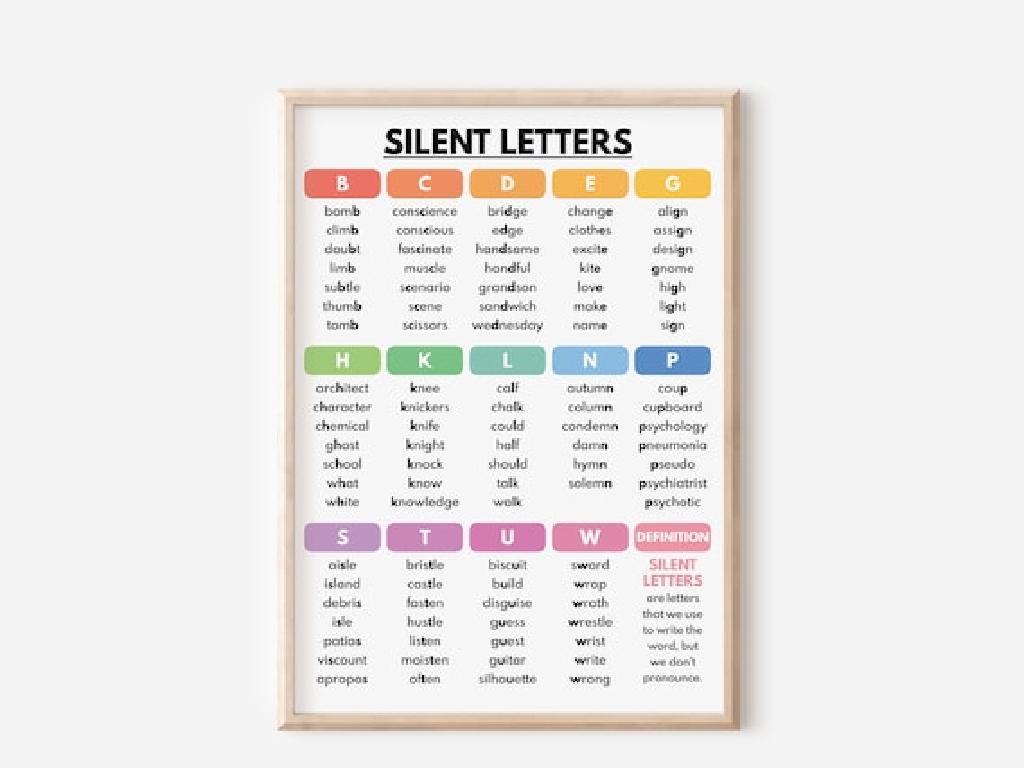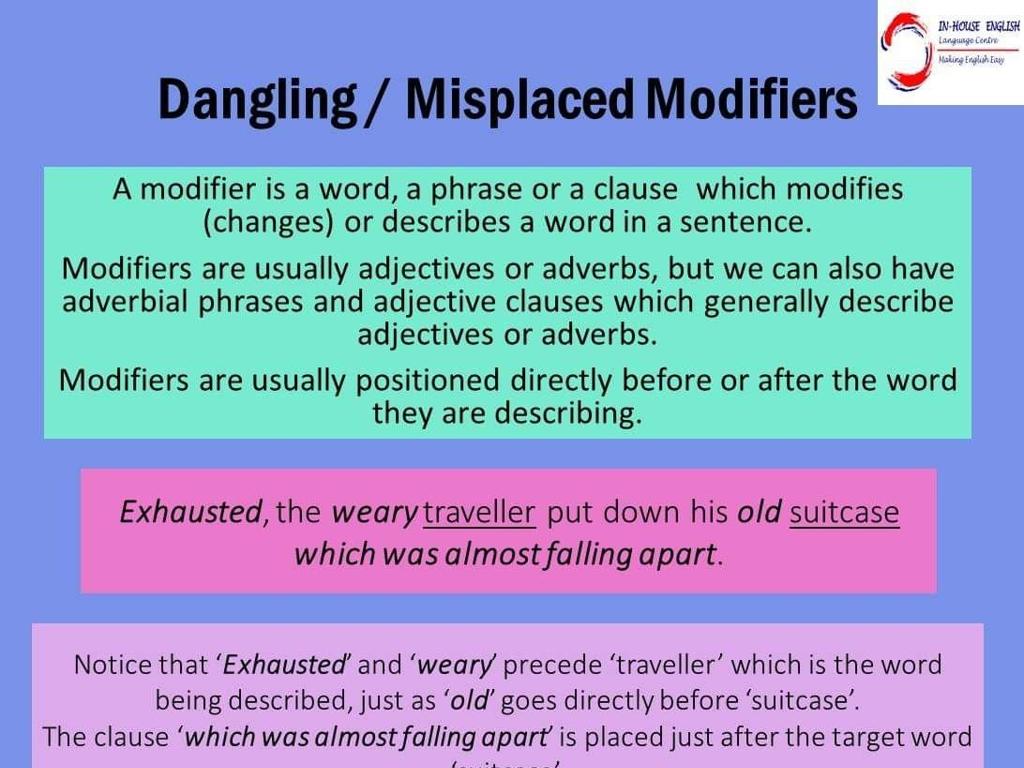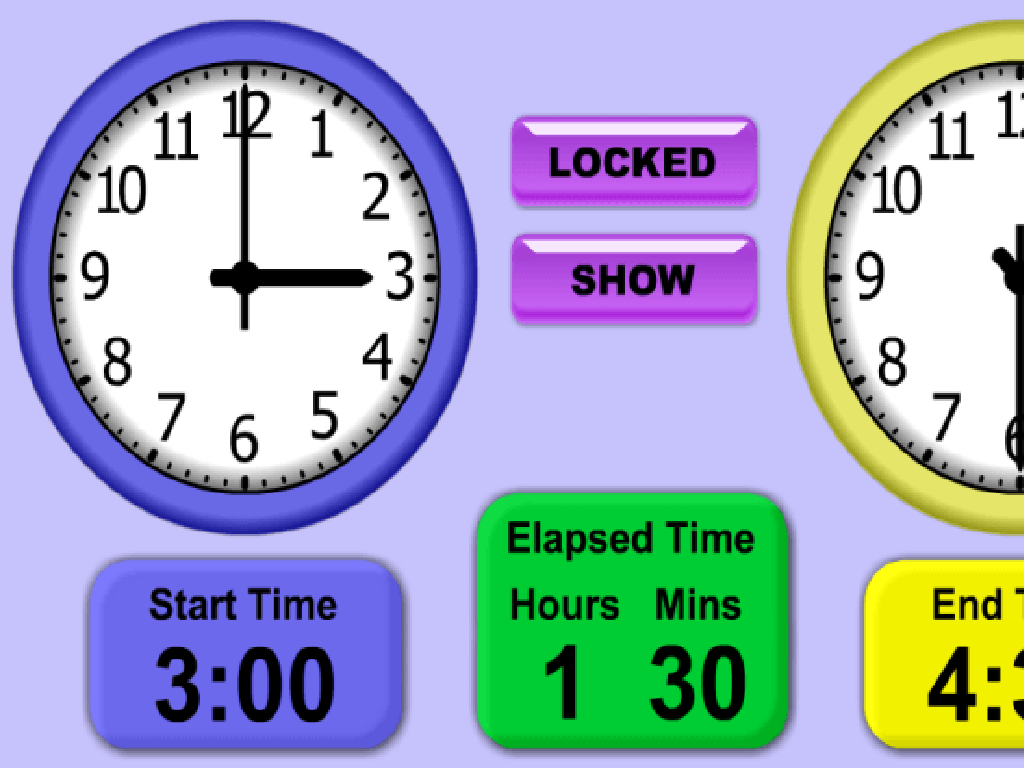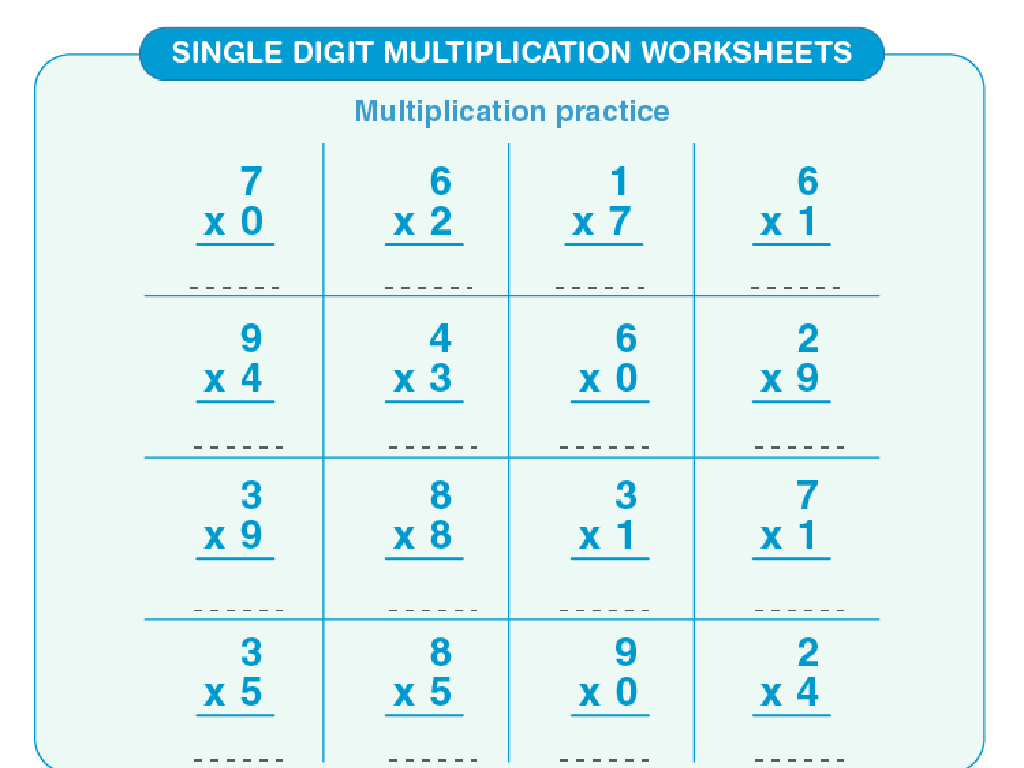Round A Number To Any Place: Up To Hundred Thousands
Subject: Math
Grade: Fourth grade
Topic: Rounding
Please LOG IN to download the presentation. Access is available to registered users only.
View More Content
Welcome to Rounding Numbers!
– Grasping the concept of rounding
– Rounding means approximating a number to the nearest place value.
– Reasons for rounding numbers
– To simplify, estimate, or make numbers easier to work with.
– Today’s goal: Rounding to hundred thousands
– We’ll learn to round numbers as large as hundred thousands.
– Practice rounding with examples
|
This slide introduces the concept of rounding, which is a fundamental skill in mathematics, particularly useful for estimating and simplifying numbers. Explain that rounding helps in making numbers easier to work with, especially when exact values are not necessary. Today’s objective is to enable students to round numbers up to the hundred thousand place. Provide examples and practice exercises to help students understand how to identify which digit to round to and how to determine whether to round up or down based on the value of the digits.
The Basics of Rounding Numbers
– Understanding rounding
– Rounding simplifies numbers for easier calculation
– Rounding to nearest ‘big’ number
– It’s choosing the nearest number with fewer digits
– Example: Round 84 to nearest ten
– 84 becomes 80 because it’s closer to 80 than to 90
– Practice with different numbers
|
Rounding is a fundamental math skill that helps make numbers more manageable and easier to work with, especially during mental calculations or when estimating. It involves finding the nearest number that is easier to use. For example, rounding 84 to the nearest ten would result in 80 because 84 is closer to 80 than to 90. When teaching this concept, use a number line to visually demonstrate how numbers are rounded up or down to the nearest ten, hundred, or thousand. Encourage students to practice rounding different numbers to various places to solidify their understanding. Provide several examples and possibly incorporate a game or interactive activity to make the learning process engaging.
Rounding to the Nearest Ten
– Examine the ones place digit
– If it’s 4 or less, round down
– Numbers ending in 1-4 get rounded down
– If it’s 5 or more, round up
– Numbers ending in 5-9 get rounded up
– Practice with the number 34
– What’s 34 rounded to the nearest ten?
|
This slide introduces students to the concept of rounding numbers to the nearest ten. Start by looking at the digit in the ones place to determine whether to round up or down. If the ones place is 4 or less, the number rounds down to the previous ten. If it’s 5 or more, the number rounds up to the next ten. Use the number 34 as a practice example to apply this rule. Ask students to identify the ones place digit and decide whether to round up or down. The correct answer is rounding 34 up to 40 because the ones place is 4, which is less than 5. Encourage students to practice with more examples and explain their thinking process.
Rounding to the Nearest Hundred
– Examine the tens place digit
– Look at the second digit in 256, which is 5
– Apply the ‘4 or less’, ‘5 or more’ rule
– If it’s 4 or less, round down. If it’s 5 or more, round up
– Practice with an example
– Round 256 to the nearest hundred. Is it 200 or 300?
– Understand why we round numbers
|
This slide introduces students to the concept of rounding numbers to the nearest hundred. Start by looking at the number in the tens place to determine whether to round up or down. The ‘4 or less’ and ‘5 or more’ rule is a simple guideline for this decision. Use the number 256 as a class activity to apply this rule. Ask the students if the tens place digit (5) means we should round up or down. After rounding, discuss why rounding is useful in everyday situations, such as estimating costs or distances.
Rounding to the Nearest Thousand
– Examine the hundreds place
– Look at the digit in the hundreds place to decide
– Apply the rounding rule
– If it’s 5 or more, round up. If it’s 4 or less, round down
– Example: Round 3,450
– 3,450 has 4 in the hundreds place, so we round down to 3,000
– Practice with different numbers
|
This slide introduces students to the concept of rounding to the nearest thousand. Start by directing students to look at the number in the hundreds place to determine whether to round up or down. The rounding rule is simple: 5 or more, round up; 4 or less, round down. Use 3,450 as an example to illustrate this rule, showing that since the hundreds place is 4, we round down to 3,000. Encourage students to practice with various numbers, both in class and as homework, to reinforce the concept. Provide additional examples and have students explain their thought process to ensure understanding.
Rounding to the Nearest Ten Thousand
– Look at the thousands place
– For 48,500, the thousands place is 8
– Apply the rounding rule
– If it’s 5 or more, round up. If it’s 4 or less, round down
– Example: Round 48,500
– 48,500 rounded to the nearest ten thousand is 50,000
– Practice it yourself
|
This slide introduces students to the concept of rounding numbers to the nearest ten thousand. Start by examining the digit in the thousands place to determine how the number will be rounded. Reinforce the ’rounding rule’ which states that if the digit is 5 or higher, the number is rounded up, and if it’s 4 or lower, it’s rounded down. Use 48,500 as an example to show that since the thousands place is 8, we round up to 50,000. Encourage students to practice with different numbers and provide immediate feedback. This exercise will help solidify their understanding of rounding large numbers.
Rounding to the Nearest Hundred Thousand
– Examine the ten thousands place
– Apply the rounding rule
– If ten thousands is 5 or more, round up. If less, round down.
– Example: Round 150,000
– 150,000 rounded to nearest hundred thousand is 200,000
– Practice with different numbers
– Try rounding 249,999 and 350,001
|
This slide introduces students to the concept of rounding numbers to the nearest hundred thousand. Start by looking at the ten thousands place to determine whether to round up or down. The rounding rule is straightforward: if the ten thousands digit is 5 or more, round up to the next hundred thousand; if it’s 4 or less, round down. Use 150,000 as a clear example to show that it rounds up to 200,000. Encourage students to practice with various numbers, such as 249,999 (which rounds down to 200,000) and 350,001 (which rounds up to 400,000). This exercise will help solidify their understanding of rounding large numbers.
Let’s Practice Rounding Numbers!
– Round 75,349 to nearest thousand
– Is it closer to 75,000 or 76,000?
– Round 164,785 to nearest ten thousand
– Is it closer to 160,000 or 170,000?
– Round 298,501 to nearest hundred thousand
– Is it closer to 200,000 or 300,000?
|
This slide is an interactive class activity designed to help students practice rounding numbers to various place values. For the first number, guide students to look at the hundreds place to determine if 75,349 should be rounded up to 76,000 or remain at 75,000. For the second number, they should look at the thousands place to decide between 160,000 or 170,000. Lastly, for the third number, students will examine the ten thousands place to round to either 200,000 or 300,000. Encourage students to explain their reasoning for each rounding decision. Possible activities include working in pairs, using manipulatives to represent the numbers, or creating a number line on the board to visualize the rounding process.
Class Activity: Rounding Relay!
– Form groups for the relay
– Each student rounds a number
– Round the given number to the nearest ten, hundred, or thousand
– Pass the marker after answering
– First team to finish wins!
– Ensure all answers are correct to win
|
This activity is designed to make learning about rounding numbers interactive and fun. Divide the class into small groups and have them form lines. Write numbers on the board and instruct each student to round one number to the specified place value when it’s their turn. After rounding, the student passes the marker to the next teammate. The activity continues until one team completes all their rounds correctly. This not only reinforces the concept of rounding but also encourages teamwork and healthy competition. Prepare a variety of numbers in advance, and consider having different place values for each round to ensure a comprehensive understanding of the concept.
Wrapping Up: Rounding Numbers
– Congratulations on learning rounding!
– Practice is key to mastering it
– Homework: Rounding worksheet
– Worksheet includes numbers up to hundred thousands
– Bring any questions to next class
– Ready to help in the next session
|
This slide concludes the lesson on rounding numbers to any place up to hundred thousands. Reinforce the idea that practice is essential for understanding the concept of rounding. The homework assignment is a worksheet that will provide students with additional practice to solidify their skills. Remind students to attempt all problems and assure them that questions are welcome in the following class. This will help address any uncertainties and ensure that all students are confident in rounding numbers. Encourage them to try their best and remind them that making mistakes is a part of the learning process.





